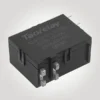Introduction
Latching relay applications are growing rapidly as industries seek energy-efficient, memory-capable switching solutions. Unlike conventional relays that require constant power to hold their state, latching relays use a magnetic or mechanical latch to retain their position, even during power loss.
In this article, we’ll explore the top latching relay applications, explain why they are preferred in certain use cases, and highlight the benefits of integrating latching technology into your systems.
What Is a Latching Relay?
A latching relay—also known as a bistable relay—maintains its last switched position after the control signal is removed. It only consumes power during the switching action, not while maintaining a state. This makes it ideal for battery-powered and energy-critical applications.

Key Latching Relay Applications
Here are the most common and impactful applications where latching relays are widely used:
1. Smart Energy Meters
Modern energy meters often incorporate latching relays to disconnect or reconnect power remotely. Their ability to hold state during outages ensures reliable operation and billing accuracy.
Benefits:
- Low standby power consumption
- Memory function during outages
- Remote control and automation
2. Home Automation Systems
Latching relays are commonly used in smart lighting, motorized curtains, HVAC controls, and IoT devices. They allow a device to remain on or off without continuous current.
Applications:
- Smart switches and dimmers
- Blinds and curtain motors
- Thermostats and climate control
3. Battery-Powered Devices
Because they only use power during switching, latching relays are ideal for systems running on batteries, such as portable electronics, solar-powered devices, and mobile medical equipment.
Benefits:
- Extended battery life
- Minimal heat generation
- Compact and lightweight designs
4. Industrial Automation
In factory environments, latching relays control status indicators, alarms, and machine states that need to remain unchanged after shutdown or restart.
Use cases include:
- Emergency stop systems
- Machine process control
- Motor start/stop memory
5. Telecommunication Systems
Latching relays are used in telecom base stations and switching systems to maintain connection paths or power states during power failures or signal loss.
6. Electric Vehicle Charging Stations
Latching relays are increasingly integrated into EV chargers to manage high-voltage switching while ensuring minimal energy waste during idle time.
7. Security and Access Control
In access control systems, such as electronic locks and security gates, latching relays can maintain an open or closed state without needing constant current.
Advantages of Using Latching Relays
- Energy Efficiency – Zero holding current
- State Retention – Remembers position during power failure
- Compact Design – Fits into space-limited systems
- Long Electrical Life – Less coil stress
- Quiet Operation – Minimal switching noise
Conclusion
Latching relay applications span a wide range of industries from smart grids to home automation. Their ability to reduce energy consumption while offering reliable memory switching makes them an essential component in modern systems. When designing for efficiency, safety, and reliability, latching relays offer a powerful edge.
Whether you’re developing smart infrastructure, industrial control panels, or portable electronics, Mingni Tech-Taorelay, the latching relays supplier can help you a lot.




